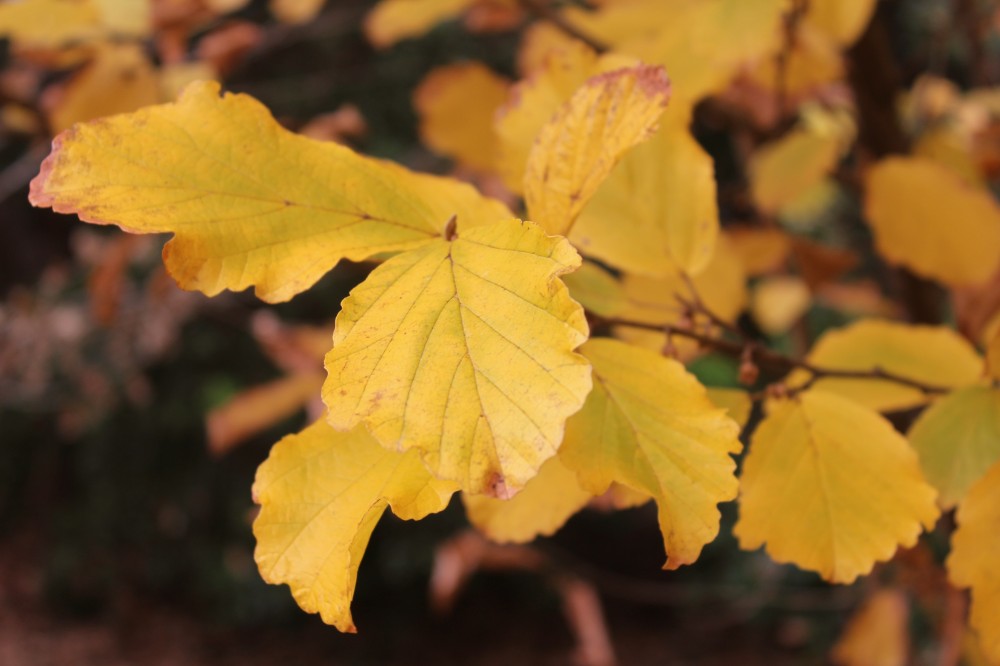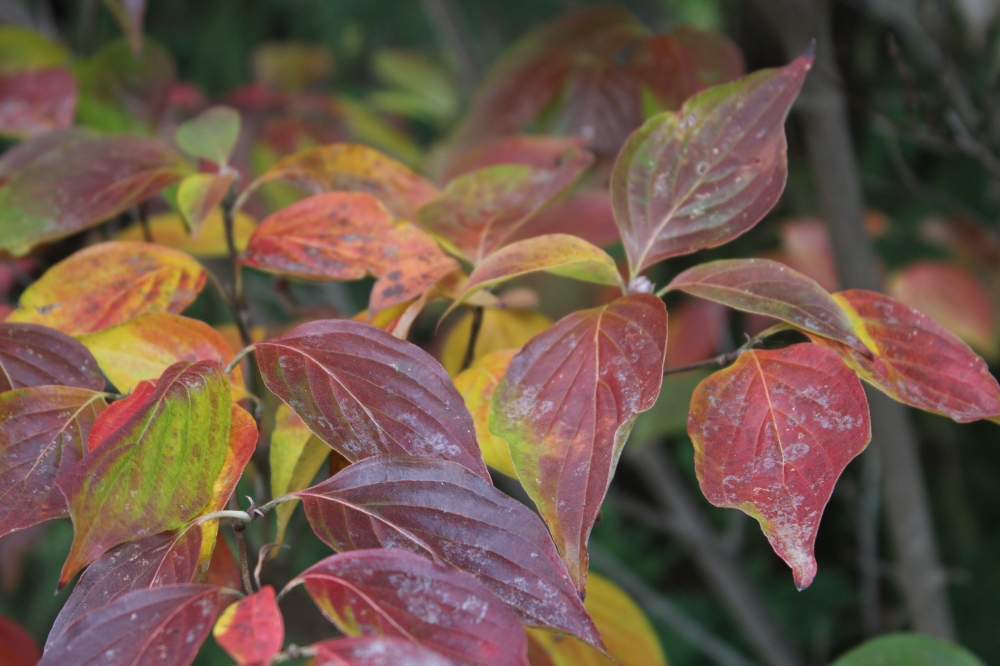The driveway and stone paths have been cleared of leaves so that holiday visitors can make their way around the garden if weather allows. Leaves are shredded and distributed to cover bare soil, while most are left whole to decay by mid spring if they are not covering low growing shrubs. Oversized leaves from the Bigleaf magnolia and neighbors’ sycamores clog the shredder, so only those that accumulate in deep piles to cover the winter flowering hellebores will be removed.

The maples and tulip poplars in the forest that borders the garden are nearly bare after several breezy days, and only a few Japanese maples (below), dogwoods, and witch hazels remain with autumn leaf color. These are trees that turn late in season, and often hold red or yellow foliage into mid December.

Deep burgundy leaves of Oakleaf hydrangeas (above) persist into January, though a delay in spraying the deer repellent resulted in the loss of many lower branches of hydrangeas along the forest’s edge. No long term harm has been done, with this reminder that even when they are not seen, deer are ever present in the garden. Now, broadleaf evergreen camellias and Japanese aucubas have been treated with repellent to discourage deer foraging through the winter months.




Dave —
You always speak of deer repellent. Which brand works best for you? I, too, have a constant parade of these animals. This year, spraying has not been very effective in my gardens; whereas in years’ past, it worked like a charm as long as I kept of with a schedule and mixed things up a bit from time to time. My suburban lot backs to wooded parkland, a stream valley, and a park, so it’s been a constant battle to come up with diversion tactics to deal with the deer. They even love “nesting” in the mulch! We have a love / hate relationship. Some days I feel as if I might “go postal” on a deer. Help!!!!
Also, your leaf shredder is a favorite tool. Would you make a recommendation on brand, size, HP, effectiveness, and any other tips on purchasing a shredder? Currently, I use a mulching mower. This works great, except there is a lot of extra work involved for me. I have no lawn, with everything in large planting areas or pathways throughout my half-acre shady lot . Therefore, I must move all the leaves to a flat surface such as the driveway or curbside, mulch them, rake them into bins for transport, then overwinter in compost bins or spread directly to beds. I have been curious about a leaf shredder as an alternative. Keep in mind that I have a gazillion leaves to process, primarily from old growth oaks and tulip poplars, plus smaller understory trees, too.
I enjoy your blog posts so much. I dream of having the honor of touring your gardens some day. In the meantime, what your photographs reveal helps me piece together what I “see” as your oasis. It is fabulous!!
Best regards, and to your good health!
— C
I am currently using Bobbex as a repellent, and until I emptied the jug I alternated with DeerAway. Certainly, my deer situation is not the worst, but deer spend their daylight hours in the thicket that borders the garden, and there are constant signs of their presence. Perhaps wrongly, I attribute most reports of failure of deer repellents to irregular application since I have such success protecting hostas and other deer favorites.
I favor any tool that minimizes labor in the garden. Many gardeners extol the virtues of garden labor, but I relish time spent wandering through the garden, or doing nothing at all. I use a gasoline powered, handheld blower/vacuum (Toro Powervac) to clean leaves that must be moved, and let the rest decay in place. I dislike gasoline engines, but there are too many obstacles to drag the cord of an electric model. Someday, there will be a battery powered vac, and I’ll switch immediately.